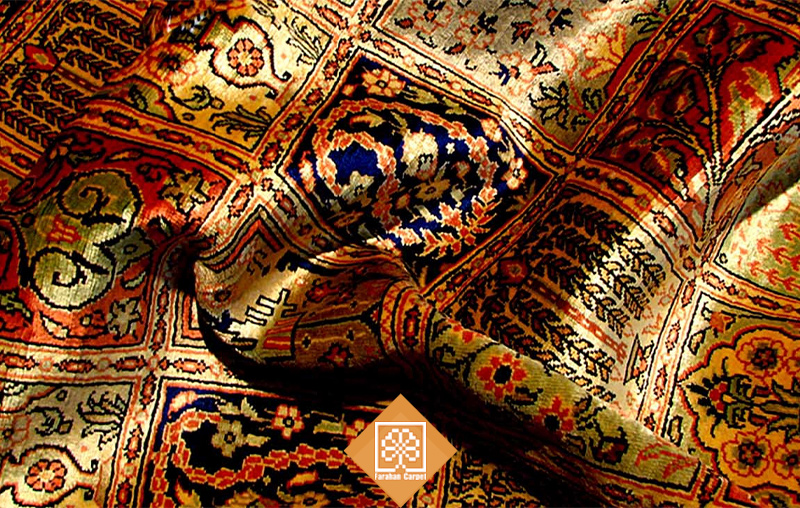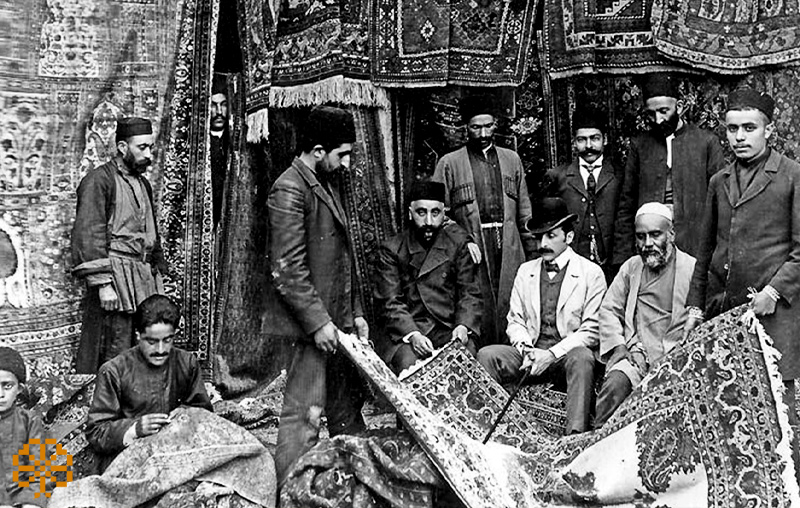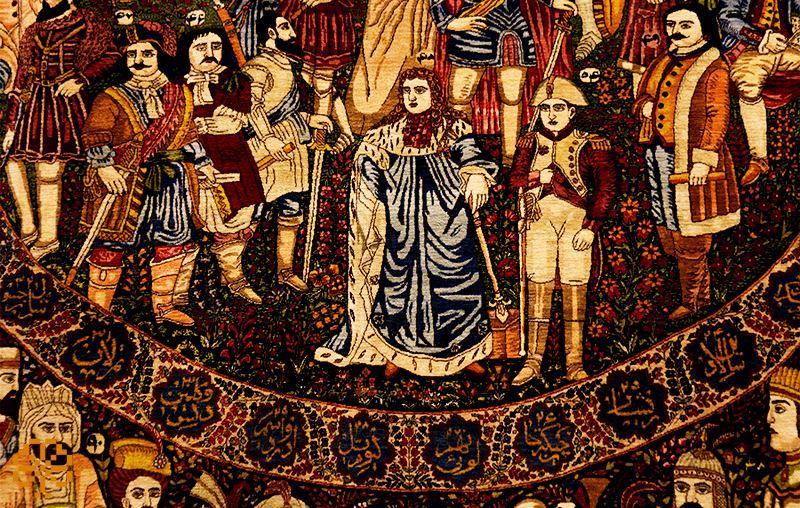History of Iranian carpets and carpet weaving

The history of Iranian carpets is perhaps one of the cases about which many different narrations and researches have been done, and contrary to what is thought, many cases and opinions are just a speculation and theory, and historically, time You can state an issue that you can substantiate with documentary evidence.
In this article of Farahan Carpet, we intend to give you the opportunity to gain a more accurate knowledge of the history of carpet and carpet weaving by listening to and understanding many unspoken things by expressing theories and world documents that exist about the history of Iranian carpets. .
Overview of the history of Iranian carpets
In order to be able to state the issue of the history of Iranian carpets with certainty, we must address the issue of what is our criterion for naming an underlay as a carpet?
Know the basis of the word carpet
Since even early humans made mats for themselves using animal skins and plant leaves, the first carpet must be attributed to early humans if we were to refer to any type of mat as a rug.
But we have more accurate criteria and assessments for this issue and we will tell you the closest and most accurate definitions that have been given so far.
The word qali or ghali is derived from the word qalin which is located in Armenia and at that time Armenia was a part of Iran, since carpet is used for many spreads, using this word as a work equivalent Is wrong.
But on the other hand, according to Moid’s dictionary, the word “carpet” can be derived from the Turkish word “qalin” meaning a fluffy carpet that is woven with yarn and wool in different colors.
So after these explanations, we mean the history of Iranian carpets, in fact, the history of fluffy carpets that have knots and we do not have much to study and use other extensions.
History of Iranian carpets
Whether we want to know Iran as the definitive beginning of the weaving of fluffy carpets and rugs is not yet clear and can not be confirmed or denied, but what can be said with certainty about carpets is that Asia The primary cradle of carpet and rug weaving are the Caucasus, Turkestan and Iran are the most likely options that can be introduced as the first country.
One of the most important documents used to obtain more accurate information about the history of carpets and rugs is the use of paintings by world artists. It should be said that all these documents are completely to the detriment of Iran, but why not really in Did he find any trace of Iranian carpet among these paintings?
It is quite natural that in Western Europe, due to its proximity to Turkey, the carpets of these regions reach the Europeans much easier and cheaper than the Iranian carpets, and on the other hand, during the Safavid period, the Ottoman Empire, trade routes from Iran to the West He was in control and periodically at war with the Iranian government.
Therefore, it can be said that not using Iranian carpets in old paintings is not a good criterion at all that we want to eliminate Iran in the meantime by referring to them.
Read more: Handmade carpet fibers and knowledge of different types of yarns and rugs
Mistakes in documents on the history of Iranian carpets in the world
Among the documents that want to talk about Iranian fluffy carpets and its history, the first one goes to the famous Greek historian Xenophon, who wrote between 430 and 345 BC: “They are spreading under their bed.” But we are looking for fluffy rugs that have a knotty texture and we are not looking for any rugs and spreads.
The next case of mistakes that is used to cite the history of Iranian carpets is the carpet of Baghistan Goharbaf design (Baharestan Kasra) of Khosrow I in Ctesiphon, which should not be considered a fluffy carpet because it is a fluffy carpet with size Introduced for this rug should weigh more than 2 tons !!!
So it is completely wrong to say these two narratives as scientific evidence that Iran is the cradle of the world carpet, but is this the whole story and there is no evidence to say that Iran can be the main source of the world’s carpeted carpet?
Pazyryk carpet and the history of Iranian carpets
In 1949, one of the turning points in the history of carpet in the world was discovered, and that was the Pazyryk knotted carpet, which was found in a border region of Mongolia.
This historical carpet, which was used as a horse cover, is very similar to the designs of the Achaemenid period in terms of border and central images, and is very similar in appearance to the objects discovered in Lorestan, Iran.
These apparent similarities led many experts to attribute this handmade carpet to Iran and the history of Iranian carpets.
On the other hand, the Chinese yearbook Suisu points out that the Iranian woolen carpet in the Sassanid period was considered one of the goods imported to China, which shows the prosperity and power of carpet weaving in Iran during the Sassanids.
Documents and articles that tell the history of Iranian carpets are not limited to these two cases, and one of the most important of these can be referred to the material published in the book Hudood Al-Alam, which shows that carpet weaving in the Persian region in the century The third lunar year has been very prosperous.
According to this authentic document, it can be concluded that carpet weaving and weaving of hand-woven carpets has been common in Iran since pre-Islamic times, and the weaving of knitted carpets with knots is much older than previously thought.
A story by Sirus Parham
Cyrus Parham, known to many art and carpet lovers in Iran as Mitra, says the following about the history of Iranian carpets:
In the works of 15th century Christian European painters, all carpets were from Anatolia and the Caucasus, and surviving examples of thirteenth- and fourteenth-century Christian carpet weaving were from the Caucasus and Asia Minor, and there were no pre-Safavid examples of Iranian textures. At that time, Pazyryk carpets had not yet been discovered and it was thought that carpet weaving had a thousand years of life and its popularity in Iran was due to the Safavid kings.
The arrival of Islam in Iran and its impact on carpets
So far, we have tried to provide the most credible documents about the history of Iranian carpets during the time of the Iranian kings and before Islam. Now, after this initial study, we will go to the history of Iranian carpets at the time after their arrival. We will go to Islam in Iran and we will tell you a little about its history.
The Arabs are one of the ethnic groups that have never valued art and works of art throughout history, at least as can be seen in the art of carpet weaving and the weaving of handmade carpets.
For this reason, after their presence in Iran, the art of carpet weaving was accompanied by a great deal of decline, and it can be said that their only reaction to Iranian carpets was to use them to decorate their magnificent palaces.
After a long time, the presence of two figures in Iran and dominating parts of Iran was able to revive the art of carpet weaving in Iran, although sometimes with different cultures with what it was in the past.
The names of these two characters are Seljuk Turks and Timur Lang, who with changes such as changing the designs and designs of Iranian carpets and using designs with rotating lines and curves instead of geometric designs, as well as using ivy motifs and flowers, animals. And birds caused a kind of carpet weaving art to change in Iran.
In this article from Farahan Carpet, we tried to briefly state everything you need to know about the documents and history of Iranian carpets. If you have any questions or points about this research and the information mentioned in it, you can ask it. Let us know in the comments section.








